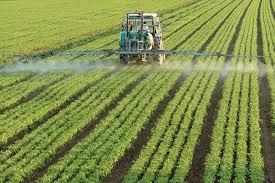Regenerative Agriculture Market Growth Challenges Hindering Sustainable Farming Expansion Worldwide

The regenerative agriculture market is positioned as a transformative force in sustainable farming, promoting practices that restore ecosystems and combat climate change. However, despite rising awareness and demand, the sector faces several growth challenges that restrict its large-scale adoption and integration into global food systems. These challenges span economic, technical, policy, and cultural dimensions.
High Cost of Transition Slowing Farmer Participation
One of the key challenges to the growth of the regenerative agriculture market is the high cost and complexity of transitioning from conventional to regenerative practices. Farmers often need to invest in new equipment, modify existing infrastructure, and adopt longer-term land management strategies such as crop rotation, cover cropping, and reduced tillage.
Unlike industrial farming, which delivers immediate returns, regenerative agriculture typically offers long-term benefits. This delay in financial reward makes it difficult for farmers—especially small and medium-scale operators—to justify the initial expenditure, creating a significant barrier to market growth.
Lack of Scalable Training and Technical Support
Regenerative agriculture requires an in-depth understanding of soil ecology, water management, biodiversity, and climate-smart farming. However, many farmers lack access to training programs or advisory services that provide hands-on knowledge and support. Without practical guidance, farmers may struggle to implement regenerative practices effectively or abandon the transition altogether.
This gap is especially pronounced in developing countries, where access to modern agricultural education is limited. The absence of skilled trainers, demonstration farms, and peer-to-peer learning networks continues to hamper the scalability of regenerative techniques and slows industry growth.
Inconsistent and Unclear Policy Frameworks
Policy uncertainty is another major challenge for the regenerative agriculture market. In many regions, agricultural subsidies and incentives are still heavily skewed in favor of high-yield, chemically intensive farming systems. These outdated frameworks make regenerative agriculture less economically attractive, discouraging adoption.
Moreover, the lack of a unified definition of regenerative agriculture complicates regulation and standardization. Without formal recognition or certification, farmers and businesses cannot easily access government support, tax incentives, or carbon credits. These inconsistencies create confusion and reduce the confidence of both producers and investors.
Weak Market Access and Infrastructure Limitations
Even when farmers adopt regenerative practices, reaching markets that value these products remains a hurdle. Most conventional supply chains prioritize efficiency, uniformity, and volume—criteria that regenerative producers, with their diversified crops and smaller-scale operations, often cannot meet.
Additionally, the infrastructure to connect regenerative producers to eco-conscious consumers—such as local food hubs, cooperatives, or certified retail platforms—is underdeveloped in many areas. Without viable sales channels and consistent demand, farmers face difficulties monetizing their regenerative efforts, slowing down market growth.
Consumer Awareness Still in Early Stages
While sustainability is becoming a priority for consumers, the term “regenerative agriculture” is still unfamiliar to many. Compared to labels like "organic" or "non-GMO," “regenerative” lacks broad recognition or understanding. As a result, consumer demand remains relatively low despite growing environmental concerns.
This low visibility affects the market’s ability to command premium prices and attract investment. Furthermore, without a standardized certification system, consumers struggle to differentiate truly regenerative products from greenwashed claims, eroding trust and reducing motivation to buy.
Measurement and Validation Complexities
Measuring the ecological benefits of regenerative agriculture is not as straightforward as calculating yields or profits. Metrics such as soil carbon content, biodiversity, and water retention are critical but difficult to track consistently across farms and regions. The absence of affordable, standardized, and widely accepted monitoring tools makes it hard to validate outcomes.
This uncertainty hinders access to carbon markets, public funding, and private investment. Investors and policymakers want tangible data to justify funding and support, but without robust validation systems, the market remains limited in its ability to grow and scale credibly.
Risk Aversion and Cultural Resistance
Farming is inherently risky, and many producers are hesitant to embrace unfamiliar methods. Regenerative agriculture represents a fundamental shift in philosophy, moving from input-heavy strategies to holistic ecosystem management. Convincing farmers to adopt this mindset—particularly in communities where conventional methods have prevailed for generations—remains a significant challenge.
Additionally, peer influence, local customs, and traditional agricultural training often reinforce resistance to change. Even when motivated by environmental concerns, many farmers fear economic failure or social judgment, which slows the market’s pace of adoption.
Conclusion
The regenerative agriculture market holds immense potential to reshape global food systems and build environmental resilience. However, realizing this potential requires overcoming a series of growth challenges—including high transition costs, policy ambiguity, technical knowledge gaps, market limitations, and consumer unawareness.
By addressing these barriers through education, inclusive policies, robust infrastructure, and awareness campaigns, the regenerative agriculture market can progress from a niche movement to a mainstream agricultural model capable of driving both environmental restoration and economic prosperity.
- Art
- Causes
- Crafts
- Dance
- Drinks
- Film
- Fitness
- Food
- Games
- Gardening
- Health
- Home
- Literature
- Music
- Networking
- Other
- Party
- Religion
- Shopping
- Sports
- Theater
- Wellness


